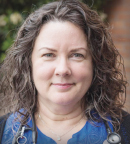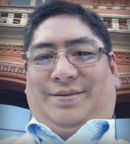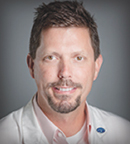In 2020, health-care providers from all disciplines are facing challenges never before encountered in the modern era of medicine. Advanced practitioners (APs) are playing critical roles in developing protocols, managing health-care teams, and delivering hands-on patient care. JADPRO Live, the annual meeting of the Advanced Practitioner Society for Hematology and Oncology, kicked off its 2020 virtual meeting with a panel discussion about this experience.
The panelists, all in leadership positions, described their institutional emergency protocols, how they leveraged APs to provide care during the crisis peak, and how they responded to the personal issues and anxieties of their AP colleagues.
Panelists included:
- Gabrielle Zecha, PA-C, MHA, Director, Advanced Practice Providers, Seattle Cancer Care Alliance/University of Washington Medicine (Moderator)
- Andrew S. Guinigundo, MSN, RN, CNP, ANP-BC, Lead APP/Genetics Lead, OHC, Cincinnati
- David Johnson, PA-C, Director of APP Services, Moffitt Cancer Center, Tampa, Florida
- Sara Toth, RN, APRN, FNP-C, AOCNP®, AGN-BC, Director, APP Services, Texas Oncology.
Patient Prioritization, Virtual Platforms
Ms. Zecha: With the emergence of COVID-19 in the spring, what changed in your day-to-day management of patients, and how did you handle those changes?
Mr. Johnson: COVID-19 struck Florida in mid-March, and it was apparent from the get-go that we wanted to mitigate exposure to our patients and team members. Moffitt immediately put together a task force and a patient prioritization system. We developed three categories of patients:
1. Category A patients had daily care continued as usual; they were undergoing active treatment or experiencing oncologic emergencies.
2. Category B patients could have their care deferred for up to 3 months. B1 patients had visits deferred for 1 month; B2 patients were deferred for 2 to 3 months; B3 patients had their in-person care converted to telehealth visits.
3. Category C patients had care deferred for 3 months or so; these patients tended to be in survivorship or surveillance or undergoing screening or genetic assessments.
Delaying care for up to 3 months seemed rational early on. Obviously, COVID-19 is still impacting us, and we don’t know the endpoint.

Gabrielle Zecha, PA-C, MHA

Andrew S. Guinigundo, MSN, RN, CNP, ANP-BC

David Johnson, PA-C

Sara Toth, RN, APRN, FNP-C, AOCNP®, AGN-BC
Ms. Zecha: What was happening early on in community sites?
Ms. Toth: Our process was similar to Dave’s in the beginning. We had a massive telemedicine initiative in the community oncology setting and, within weeks, we got more than 600 providers and support staff onto a virtual platform. As COVID-19 continued with no end in sight, we moved quickly to Plan B. We had great collaboration among physicians, APs, business operations, support staff, and IT [information technology].
Mr. Johnson: Pardon the cliché, but we don’t want to “let a good crisis go to waste.” It’s amazing what an organization can do in a short period. Things that once took weeks or months, we essentially accomplished overnight. Getting providers onto the virtual telehealth platform produced a 1,000% increase in provider utilization and virtual visits. Good things came out of this: we are still using telehealth. As an organization, we thought, “Look what we can accomplish when we set our minds to it.”
Shifting Roles for Advanced Practitioners
Ms. Zecha: How were APs leveraged to care for patients? Have there been changes to the care models? Redeployments? Extra training?
Mr. Johnson: We deployed some APs to be on the front line. We put policies and procedures in place to manage the internal medicine and ICU [intensive care unit] services with our existing teams, up to a certain number of staff. Once we hit that number, we looked for alternatives. We had an overwhelming response from APs volunteering to care for patients who were positive for, or suspected of having, COVID-19. If their new responsibilities fell outside of their skill set, we trained them. The human spirit has been remarkable in this crisis.
Mr. Guinigundo: It’s a little different in the community setting, where we are really focused on hematology/oncology. We interact with a variety of health systems, and it’s not so easy to jump into working on the internal medicine or emergency medicine service tomorrow. We deployed in different ways. When our volume was way down early on, we took that time to examine our policies and procedures. We tackled tasks that had been set aside for months and years.
Ms. Toth: We used the opportunity to develop an initiative to train APs in advanced care planning. The cancer population is at higher risk for COVID-related side effects and mortality. We focused on having those difficult conversations about patients’ values, goals, fears, and anxieties—not just about having cancer, but having cancer during a pandemic. These efforts were met with open arms by clinicians, patients, family members, and caregivers. We built this into our AP training.
“Delaying care for up to 3 months seemed rational early on. Obviously, COVID-19 is still impacting us, and we don’t know the endpoint.”— David Johnson, PA-C
Tweet this quote
Personal Protective Equipment in Short Supply
Ms. Zecha: Providers worried about having enough PPE [personal protective equipment]. How did your leadership address these and other anxieties?
Ms. Toth: We had a significant challenge in securing PPE, especially for our hospital-based workers, so we triaged its distribution. We also tried to reduce the amount of PPE we needed in our clinic, and for this we encouraged people to work from home if they could. We also partnered with local distilleries for hand sanitizer.
Mr. Johnson: It was challenging—securing PPE and abating anxiety about exposure. Our leadership engaged at a level of communication we’ve never seen before—we called it “hypercommunication.” We were transparent about our limited supply of PPE, how we were working to secure it, and how we were going to prioritize it. Through a combination of listening and hypercommunicating to team members, we did the best we could to mitigate anxiety. We were also innovative with the PPE we did have, such as how to reuse it.
Mr. Guinigundo: We had a multipronged approach, and our administrative team were superstars. My colleagues and I in the trenches, caring for patients, received daily e-mails as things unfolded, telling us, for example, “Here’s what we know now…. Use this kind of PPE in this setting.”
In oncology, we are used to having a complete data set to work with. There are hundreds of pages of guidelines saying, “This drug was compared against this drug. Its better, use that one.” With COVID-19, every day is a new data set we are analyzing and try to fit with what we are doing. We are working with an ever-changing data set.
Anxiety All Around
Ms. Zecha: COVID-19 has caused anxiety for both providers and patients. Patients have been scared to come in, and some providers have been reticent as well. How did you manage this? And with no normalcy in sight, what will be the difficulties going forward?
Mr. Guinigundo: I think that going forward, anxiety, stress, and burnout will continue to be big problems. An article in The Wall Street Journal stated there’s been a huge decrease in the amount of vacation time people are now taking. For us, something like attending JADPRO Live in person isn’t possible now, but if it were, we’d be taking time away from the clinic, enjoying a new city, expanding our education, and also sharing a beverage or a meal with colleagues from other places: that’s a form of stress reduction. Even the most introverted person needs to bounce things off colleagues in person. We are all beginning to think, “This is getting old.”
The President of our practice enacted a health initiative for staff. Instead of packing on the “COVID-19 pounds,” we participated in a program where we competed, for example, in miles walked in the past week. The office with the most miles had lunch delivered. We were offered online resources such as free yoga, meditation websites, and information sheets. These things may have been distractions, but they helped. We also need to encourage our colleagues to take time off—even a long weekend where they do nothing. This can help reduce anxiety and stress.
Mr. Johnson: Three things come to mind: burnout, resiliency, engagement. People miss the human spirit connections we used to have. I’m so thankful for the virtual platforms that allow us to “see” each other, but, I agree, it’s not the same as personal get-togethers. Going forward, we need to be more creative to mitigate this.
Challenges of Young Families
Ms. Zecha: How are your APs dealing with school-age children?
Ms. Toth: It’s been exceptionally challenging. A large majority of our APs are females with young children and are having to help their children with virtual school learning. We are doing the best we can to help, tapping into telemedicine for them, but that’s got its own challenges.
Mr. Johnson: This is a universal challenge. As an organization, we are as empathetic as possible and have measures in place in terms of a virtual platform these providers can use for working from home—though not for a whole 40-hour work week. We have also looked at their non–direct-patient-care days, when they do office work and have shifted that to home. However, although measures are in place to allow that as much as possible, it remains a great challenge.
Mr. Guinigundo: I’d like to think we would handle the situation of having school-age children at home the same as, “Jane had an emergency appendectomy and will be out for a week,” but it’s not like that: it’s like having 10 Janes who need to be out all at once.
With ‘2020’ Hindsight
Ms. Zecha: What has been your biggest lesson, or what would you do differently now, knowing what you know 9 months into the pandemic?
“People are watching you [providers] and will model their behavior after yours. Maintain your optimism!”— Gabrielle Zecha, PA-C, MHA
Tweet this quote
Ms. Toth: I wish I’d taken the time to ask what this situation looks like long term—what I should put in place now to make things successful moving forward. In the very beginning, it was a shocking and challenging time, with emotional ups and downs. From the administrative side of things, I was going week to week—or even day to day or hour to hour. With “2020” hindsight, I wish I’d taken time to sit down and examine my role, and the role of APs, long term.
Ms. Zecha: Great advice. Many people still feel frantic!
Mr. Johnson: I’d want more personal visibility upon myself and the leadership team. In the beginning, so much was happening quickly. We [administrators] were busy being innovative, trading policies and procedures, distributing e-mails. I wish that during that time, I had gotten out there with the teams more, because good leaders need to show calmness; they are anchored to the mission. I did that in small segments, but the time required for me to do other things took time away from being able to interact one-on-one. I wish I could have cloned myself to have more face time with the team.
Ms. Zecha: Having the opportunity for your team to see you by their side is invaluable, but it would, indeed, require cloning. It’s hard to be everywhere you need to be in an emergency.
Mr. Guinigundo: I would emphasize to my AP team that providers are role models. Everyone’s eyes are on us. They trust our opinions. If we model the best attitudes, best behaviors, the newest policy, the office builds on this. If we are lagging behind, fending for ourselves, that’s not good. We need more of the team approach that we talk about but don’t always participate in.
Ms. Zecha: People are watching you and will model their behavior after yours. Maintain your optimism!
DISCLOSURE: Ms. Zecha, Mr. Johnson, and Ms. Toth reported no conflicts of interest. Mr. Guinigundo has been employed by OHC/US Oncology/McKesson; has served in a leadership role for Oncology Hematology Care/US Oncology; has served as a consultant or advisoy to AbbVie/Pharmacyclics and Taiho Pharmaceutical; and has participated in speakers bureaus for Amgen, Astellas Pharma, Celgene, Genentech, Merck, and Pfizer.

